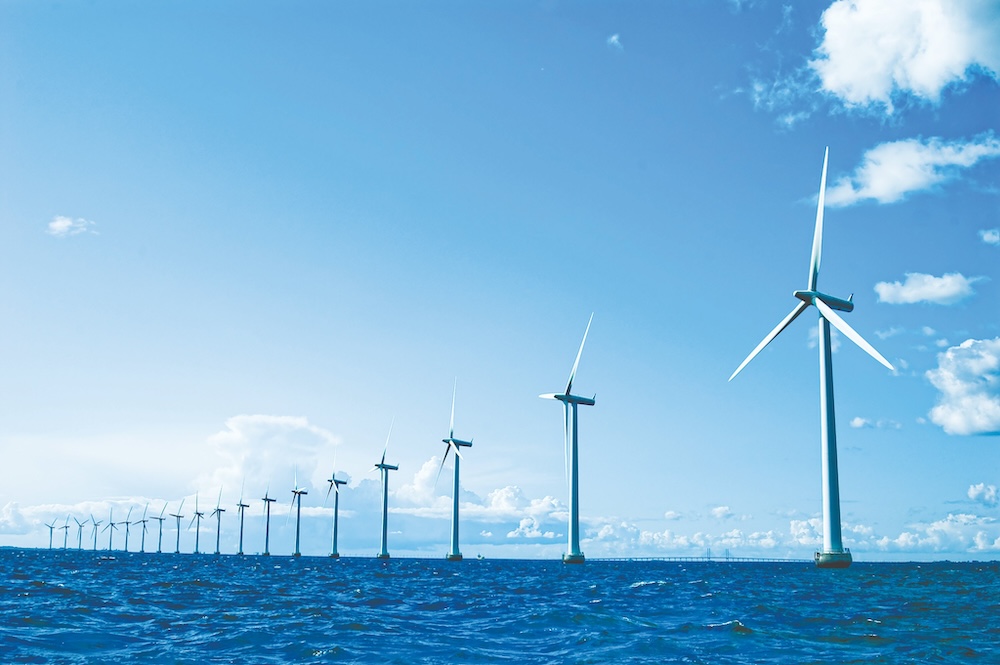HCMC – A recent merger that expanded the administrative boundaries of HCMC has opened new opportunities for the southern metropolis to go beyond its dominance in services and become a national hub for offshore wind equipment manufacturing.
An emerging industry is quietly taking shape outside the urban core—not digital tech, electric vehicles, or semiconductors, but offshore wind equipment manufacturing. With deep-water ports, riverside industrial zones, a strong mechanical engineering base, and growing renewable energy demand, the new HCMC is well-positioned to take the lead.
Under Vietnam’s National Power Development Plan VIII, offshore wind is set to become a key pillar of the country’s energy mix. The Government targets at least 6,000 megawatts (MW) of offshore wind capacity by 2030, rising to 91,500 MW by 2050. Provinces such as Vinh Long, Can Tho, Ca Mau, and Lam Dong are preparing to install offshore wind turbines, and multiple multi-billion-dollar projects are already underway.
Over 40 offshore wind projects have been registered across the country. Three have received survey permits with projected investments worth several billion U.S. dollars. In a significant move to kickstart development, the Ministry of Industry and Trade recently announced a ceiling price for offshore wind-generated electricity, up to VND4,000 per kWh, the highest so far.
As these projects move into the construction phase, developers will require thousands of wind turbine towers, foundations, and blades annually. These components are massive in size and demand advanced manufacturing capabilities and specialized waterway logistics.
This is where the new HCMC’s competitive edge stands out. The Cai Mep–Thi Vai deep-water port can accommodate heavy-lift vessels, while riverside industrial parks such as Phu My, Dong Xuyen, and Long Son offer available space and technical capacity. Major rivers like the Thi Vai, Dong Nai, and Soai Rap allow direct transport from factories to offshore sites.
Key logistics hubs Hiep Phuoc and Cat Lai further support this ecosystem. Meanwhile, the city remains a center for training engineers in mechanical, marine, and energy disciplines, critical for building a qualified workforce in this high-tech manufacturing sector.
Importantly, HCMC is home to two flagship companies in the offshore wind supply chain. PetroVietnam Technical Services Corporation (PTSC), with years of experience building offshore oil rigs and steel structures, has pivoted to manufacturing wind turbine foundations and providing installation and operation services for offshore turbines. Korean firm CSWind, located in Phu My, is the largest wind tower manufacturer in Vietnam, supplying projects worldwide. Its towers—over 100 meters tall and weighing up to 200 tons—are only transportable via water.
However, a few anchor firms alone are not enough to establish a robust industrial cluster. A complete supply chain for offshore wind equipment requires a network of supporting industries, such as steel fabrication plants, cement and concrete manufacturers, heavy-lift logistics providers, engineering design centers, specialized training institutes, green investment banks, and most crucially, proactive local government planning and coordination.
This cluster will not form on its own. The new HCMC must take a proactive role in industrial development, starting with a spatial master plan for a wind equipment production and logistics corridor along the Thi Vai River. This corridor would integrate specialized ports, manufacturing zones, and supporting infrastructure. An industry cluster management board should then be established to connect key enterprises, technical universities, and government agencies. The board would work to localize production, facilitate technology transfer, share contracts, and build supply chain capacity.
If launched at the right time, such a green manufacturing cluster could become a strategic growth engine for southern Vietnam, evolving alongside the offshore wind sector over the next several decades.
Once a national leader in services, finance, and technology, the new HCMC now has the chance to lead in developing a high-value green industry that not only meets domestic needs but also reaches global markets.









